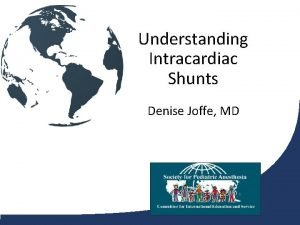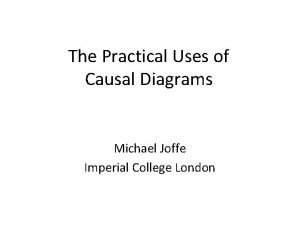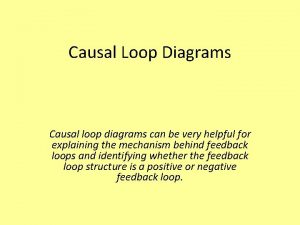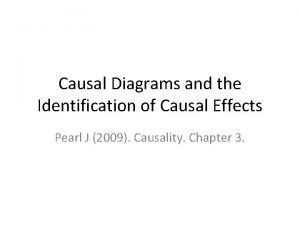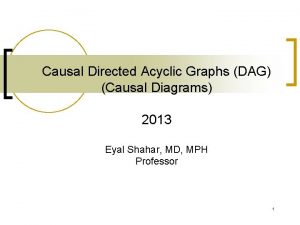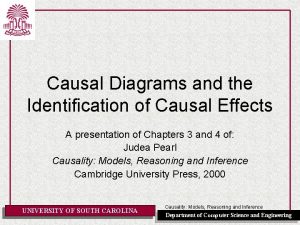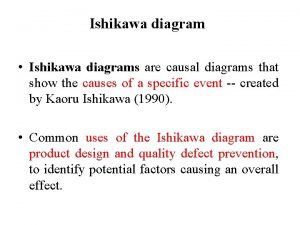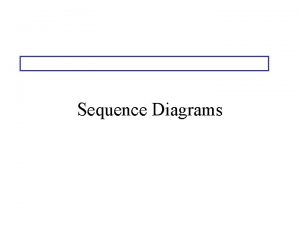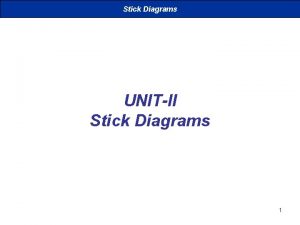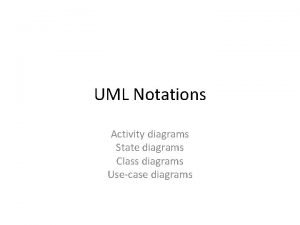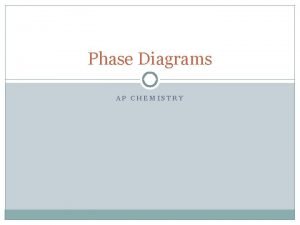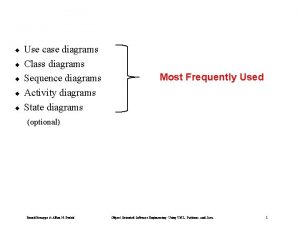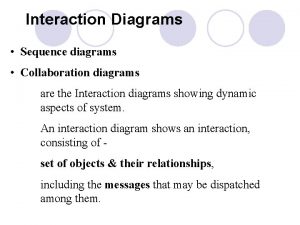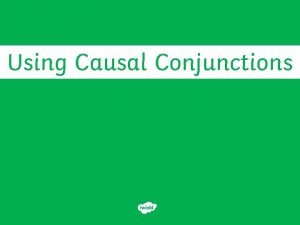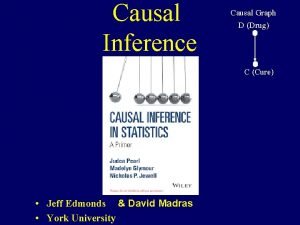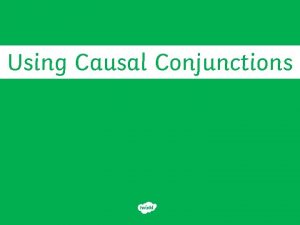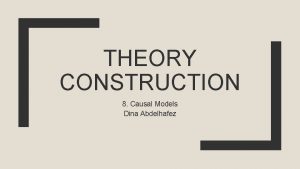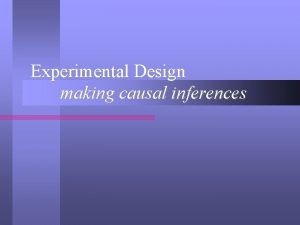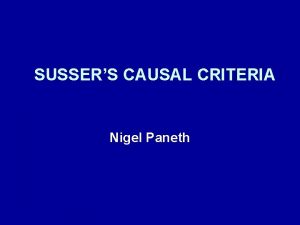The Practical Uses of Causal Diagrams Michael Joffe
































- Slides: 32

The Practical Uses of Causal Diagrams Michael Joffe Imperial College London

The use of DAGs in epidemiology • theory of Directed Acyclic Graphs (DAGs) has developed formal rules for controlling confounding, equivalent to algebraic formulations in their rigour, but simpler to use and less error-prone • the resulting graphical theory is found to conform to traditional “rules of thumb” – but is a better guide in difficult conditions

A typical DAG in epidemiology L is parental socioeconomic status U is attraction towards physical activity (unmeasured) C is “risk” of becoming a firefighter E is being physically active (“exposure”) D is heart disease (“outcome”) from Hernán, MA, Hernández-Díaz S, Robins, JM. A structural approach to selection bias. Epidemiology 2004; 15(5): 615 -25

The use of DAGs in epidemiology • theory of Directed Acyclic Graphs (DAGs) has developed formal rules for controlling confounding, equivalent to algebraic formulations in their rigour, but simpler to use and less error-prone • the resulting graphical theory is found to conform to traditional “rules of thumb” – but is a better guide in difficult conditions

The use of DAGs in epidemiology • theory of Directed Acyclic Graphs (DAGs) has developed formal rules for controlling confounding, equivalent to algebraic formulations in their rigour, but simpler to use and less error-prone • the resulting graphical theory is found to conform to traditional “rules of thumb” – but is a better guide in difficult conditions • the focus is on a single link: effect of E on D • arrows mean causation: a variable alters the magnitude, probability and/or severity of the next variable • it can readily cope with multi-causation – the representation of effect modification is still problematic

Pearl: causal & statistical languages associational concept: can be defined as a joint distribution of observed variables • correlation • regression • risk ratio • dependence • likelihood • conditionalization • “controlling for” causal concept: • influence • effect • confounding • explanation • intervention • randomization • instrumental variables • attribution • “holding constant”

Four ways of explaining a robust statistical association X Y causation X Y reverse causation C X Y common ancestor (confounding) common descendant (Berkson bias)

The SIR model of infections β ν

Modelling the whole system I • this type of “compartmental model” is widely used in infectious disease epidemiology • it can only be used where the population can be divided unambiguously into categories: a flow chart • another example is Ross’ classic equation for malaria: N = p. m. i. a. b. s. f where N is new infections/month; p is population; m is proportion infected; i is proportion infectious among the infected; a is av. no. of mosquitoes/person; b is proportion of uninfected mosquitoes, s is proportion of mosquitoes that survive; f is proportion of infected mosqitoes that feed on humans • this only applies to a uni-causal situation (mosquitoes) • what is the equivalent in typical multi-causal situations?

Transport-related health problems

Modelling the whole system II • “web of causation”; “upstream” influences • causal diagrams are constructed based on substantive knowledge of the topic area plus evidence • chains of causation, not just one link; and multiple chains – assumption of independence • multidisciplinary • individual & group levels are combined – as is routine in infectious disease epidemiology • organised by economic/policy sector • health determines the content of the diagram – “driven by the bottom line”

Conditional independence X and Y are conditionally independent given Z if, knowing Z, discovering Y tells you nothing more about X P(X | Y, Z) = P(X | Z) • Z = genotype of parents • X, Y = genotypes of 2 children • If we know the genotype of the parents, then the children’s genotypes are conditionally independent Z X diagram adapted from Best, Richardson & Jackson Y

A C D F B E Conditional independence provides mathematical basis for splitting up large system into smaller components C A D D C B F E E diagram adapted from Best, Richardson & Jackson

Functions of diagrams: scientific • the aim is a diagram that describes causal relations “out there” in the world, not a mental map • a framework for analysis, e. g. statistical modelling • to make assumptions and hypotheses explicit for discussion, and for planning data collection and analysis • to place hypotheses in the public domain prior to testing – a conjecture that is open to refutation • to identify evidence gaps • to generate a research agenda

Empirical aspects • default: “all arrows” (saturated model) is conservative – omission is a stronger statement than inclusion • corollary: deletion following statistical analysis is the strong step – uses model selection methods, e. g. AIC • quantification of the links that remain • transmissibility: X → Y and Y → Z does not necessarily imply that X → Y → Z, e. g. in the case of a threshold • a diagram is not like a single study, it’s more like a synthesis, => the issue of generalisability • a single diagram can be used to integrate multiple datasets • suitable both for qualitative and quantitative analysis

Diagrams and evidence • a conjectural diagram can be formed from substantive knowledge of a subject, as a basis for analysis • diagrams evolve from conjectural to well-supported, as evidence is accumulated • it is crucial to specify the status of any particular diagram – an analysis of the assumptions and judgements that have been made, the degree of uncertainty and the strength of evidence for the structure of the diagram and for each of the links (including those thought to be absent)

Causes of the causes of health Underlying causes e. g. socioeconomic factors Determinants (risk factors) Health status (diseases etc)

Transport-related health problems

Altering the causes of the causes Policy options alterable causes Changes in alterable risk factors Changes in health status

Health impact of transport policies

“Change” models: advantages • Parsimony: the immense complexity of the pathways can be greatly reduced by focusing on changes, especially in the absence of effect modification; • Philosophy: causality is more readily grasped when something is altered, e. g. a particular road layout rather than “roads” as a necessary condition of “road deaths”; • Pragmatism: changes in the determinants of health determinants link naturally to policy options (cf Wanless: “natural experiments”).

Effect of the coal ban, Dublin, 1990 • before-after comparison of pollution concentration, adjusted for weather etc • 72 months before and after the ban • also controls for influenza and age structure • all-Ireland controls for secular changes



Emissions control as a technical fix

Car dependence

labor productivity health status nutritional intake

land quantity & fertility climate & weather pests, e. g. fungi, rats inputs, e. g. irrigation, chemicals tools & technology health status micronutrient content infant feeding practices labor productivity nutritional intake exposure to infectious agents contaminants e. g. aflatoxins chemicals e. g. pesticides war, natural catastrophe, etc

The SIR model of infections β ν

The SIR model of infections β ν The basic reproductive number R 0 is given by: where β is the contact rate (infectivity), and ν is the recovery rate (= 1/D where D is duration)

The SIR model of infections β ν The basic reproductive number R 0 is given by: where β is the contact rate (infectivity), and ν is the recovery rate (= 1/D where D is duration)

THANK YOU!
 Michael joffe
Michael joffe Causal diagrams for epidemiologic research
Causal diagrams for epidemiologic research Rafaels joffe
Rafaels joffe Denise joffe
Denise joffe Rodney joffe
Rodney joffe Avril joffe
Avril joffe Dave joffe
Dave joffe Rodney joffe
Rodney joffe Use case model
Use case model Activity diagram if
Activity diagram if Hát kết hợp bộ gõ cơ thể
Hát kết hợp bộ gõ cơ thể đặc điểm cơ thể của người tối cổ
đặc điểm cơ thể của người tối cổ Bàn tay mà dây bẩn
Bàn tay mà dây bẩn Mật thư anh em như thể tay chân
Mật thư anh em như thể tay chân Glasgow thang điểm
Glasgow thang điểm ưu thế lai là gì
ưu thế lai là gì Tư thế ngồi viết
Tư thế ngồi viết Gấu đi như thế nào
Gấu đi như thế nào Thẻ vin
Thẻ vin Thể thơ truyền thống
Thể thơ truyền thống Các châu lục và đại dương trên thế giới
Các châu lục và đại dương trên thế giới Từ ngữ thể hiện lòng nhân hậu
Từ ngữ thể hiện lòng nhân hậu Diễn thế sinh thái là
Diễn thế sinh thái là Thế nào là giọng cùng tên
Thế nào là giọng cùng tên Phép trừ bù
Phép trừ bù Chúa sống lại
Chúa sống lại Hổ sinh sản vào mùa nào
Hổ sinh sản vào mùa nào Lời thề hippocrates
Lời thề hippocrates đại từ thay thế
đại từ thay thế Quá trình desamine hóa có thể tạo ra
Quá trình desamine hóa có thể tạo ra Vẽ hình chiếu vuông góc của vật thể sau
Vẽ hình chiếu vuông góc của vật thể sau Công thức tính thế năng
Công thức tính thế năng



